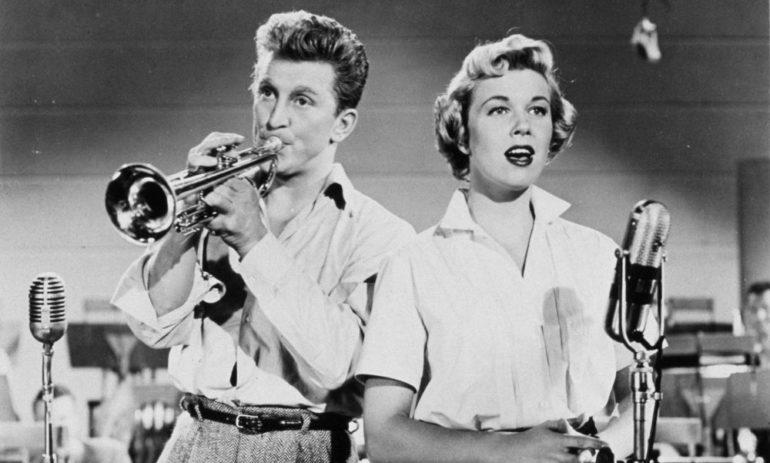Doris Day, Chanteuse: Five of Her Greatest Musical Performances
By A.D. Amorosi
LOS ANGELES (Variety.com) – Doris Day may have died with a reputation of being Hollywood’s most scrubbed-clean and wholesome girl-next-door type . But she made it to the big screen courtesy her warmly simmering and easily quavering vocal tones. Before films beckoned, she was a featured vocalist with big band-era kings such as Bob Crosby (Bing’s brother) and Les Brown and His Band of Renown, the latter of which recorded Day sunnily crooning “Sentimental Journey” and “My Dreams Are Getting Better All the Time.”
While both ballads made her the toast of radio fans and World War II vets coming home from the battlefront in 1945, Day had so much more to offer during her sadly abbreviated singing career — which included one album released in the 21st century, “My Heart,” and a host of previously unreleased songs she recorded with her composer-producer son, the late Terry Melcher.
Here are some signature smashes and cool surprises from .
“Embraceable You” (1944, a radio track with the Victory Parade Of Spotlight Bands Orchestra directed by Les Brown)
Billie Holiday’s recording of George and Ira Gershwin’s slow, jazzy ballad from the same year as Day’s side is the more famous version, maybe rightly so. But, listening to the playfully dramatic and sensual manner in which Day shushes her “s” sounds and vamps her way through its finale — pure magic.
“The Very Thought of You” (1950, from “Young Man with a Horn”)
Representing Day’s move from big band singer into Hollywood musical actress, this surprisingly complex Ray Noble song — as well as a handful of other tunes such as “The Man I Love” and “Too Marvelous for Words,” recorded after the film’s production — finds Day gently bringing her past into her present with delicious nuance and soul. Harry James’ potent and thrilling trumpet solos are a handsome counterpart to Day’s pretty winnowing.
“I Just Blew In From the Windy City” (1953, the film “Calamity Jane”)
For a richly expressive and clearly annunciating vocalist such as Day, acting and singing in Hollywood film musicals allowed the opportunity to combine her talents and truly pout across a song’s intention within the context of its script. Written by Sammy Fain and Paul Francis Webster, this hammy Western-stylized tune shows Day picking off a host of her character’s ticks and eccentricity with every note.
“Ten Cents a Dance” (1955, the film “Love Me or Leave Me”)
Portraying real-life jazz chanteuse Ruth Etting — in a film that followed her life from dime-a-dance hall hostess to celebrated songstress (courtesy Chicago mobster Moe Snyder, played by James Cagney) — gave Day something darkly dramatic to chew … not just as an actress, but as a vocalist. The strength, vulnerability, passion and pathos found in her rendition of the Richard Rodgers/Lorenz Hart barroom classic will leave you weak. Quite frankly, her entire soundtrack to “Love Me or Leave Me” is beguiling.
“Que Será, Será (Whatever Will Be, Will Be)” (1956, Academy Award Winner for Best Original Song, “The Man Who Knew Too Much”)
Day’s sunshiny signature number comes, oddly enough, from a part in Alfred Hitchcock’s mystery classic, “The Man Who Knew Too Much.” The vocalist toys with the Jay Livingston/Ray Evans track the way a cat would play with a toy, tickling it and slapping it lightly with her claws. Eventually, Day would wind up whistling and intoning its happy verses again in the 1966 film “The Glass Bottom Boat,” accompanied by Arthur Godfrey on ukulele, no less. But Hitchcock had it first, and best.

